The Broke Backpacker is supported by you. Clicking through our links may earn us a small affiliate commission, and that's what allows us to keep producing free content 🙂 Learn more.
Siquijor is without a doubt one of the most beautiful places I’ve been to in my life. I didn’t know beaches actually looked like this! White sand beaches, insanely clear waters and towering palm trees… the whole shebang. I had some real pinch-me moments on these beaches.
Not only is Siquijor blessed with pristine beaches but venture inland and you’ll be blessed with lush forests and gushing waterfalls. Whether you want a chill dip in the freshwater pools or the swing into the water from a rope – you can have the best of both worlds.
Although it’s clear there is a unique magic on the island that makes the place undeniably special… there is also a different story about the magic on Siquijor. For years, Siquijor has been avoided by many due to its reputation of being home to witchcraft and black magic.
I was lucky enough to live in Siquijor for a month and got to explore every inch of this beautiful island (above and below the water!). No wizards were found, however, I did find some pretty magical places that I’m excited to share with you.
In this ULTIMATE Siquijor Travel Guide, I’ll unpack all of my wisdom on the top things to do, the best places to stay and how to get around the island. Plus, lots of other tips and tricks along the way.
So, without further ado, let’s get into all the important stuff you need to know before backpacking Siquijor.

Photo: @danielle_wyatt
The Broke Backpacker is supported by you. Clicking through our links may earn us a small affiliate commission, and that's what allows us to keep producing free content 🙂 Learn more.
- Why Visit Siquijor Island?
- A Sample 3-Day Itinerary for Siquijor
- 9 Top Things to Do in Siquijor
- Where to Stay in Siquijor
- Backpacking Siquijor Costs
- Best Time to Visit Siquijor
- What to Pack for Siquijor
- Siquijor Travel Guide to Getting There and Around the Island
- Staying Safe in Siquijor
- Working and Volunteering in Siquijor
- FAQs About Backpacking Siquijor
- Final Advice Before Visiting Siquijor
- Buy Us a Coffee!
Why Visit Siquijor Island?
We can’t skip over the island’s undeniable beauty… I mean, you’re travelling to the Philippines! The country is home to some of the most incredible natural wonderlands in the world. Insane beaches, lush forests and some of the kindest people in the world.
Something that surprised me on my visit to Siquijor was the clear influence that the Spanish had on the island. The catholic churches in each town, the colourful buildings and the locals greeting you with “Como Estas” all add to the island’s charm.
The island also had another mysterious charm with its apparent “black magic” practices. Faith healers live on the island and have created a reputation for the island being haunted. This is why – for a long time – the island has not been as popular as staying in Bohol or Cebu.
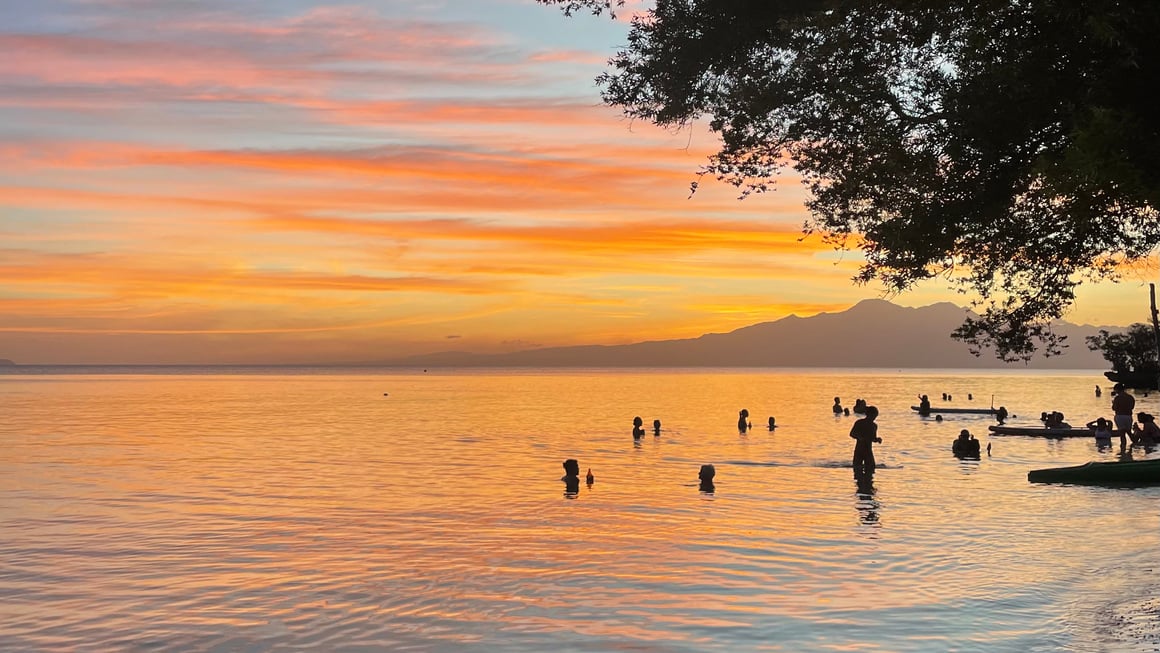
Photo: @danielle_wyatt
Most Siquijor neighbourhoods have succumbed to a bit of modernisation, so faith healers have remained on the outskirts. If you want to consult with one, you have to know the right people who just might help you out.
As the island has not been flocked by so many tourists, its beauty has remained intact. Although it is slowly becoming a favourite among local and foreign tourists, Siquijor did not give in to the demands of full modernisation. It maintains its mystique all the while bewitching first-time visitors to return to its turquoise waters and century-old churches.
I encourage you to leave all your apprehensions at home, pack your bags, and allow Isla de Fuego (‘Island of Fire’) to blow you away! And if you’re not quite sold yet… read on, my friend!
Psst, I’ve got news… we’ve launched an online community and you’re invited <3
“Broke but Backpacking” is a WhatsApp community full of passionate travellers who love to exchange tips, stories and inspiration. Connect with like-minded backpackers and be the first to hear about exclusive deals and giveaways designed just for the community.
Join the CrewWhat Are The Major Attractions in Siquijor?
Siquijor is a mixed bag of goodness when it comes to things to do. From lush, green forests with flowing waterfalls to rich marine life with beautiful corals – Siquijor is brimming with incredible nature to enjoy. However, not only that – Siquijor is also known for its unique culture and delicious food scene.
I love the saying “No plan is the best plan”… however, sometimes, when you’re travelling with time restrictions, a little bit of a plan can be pretty helpful. These are my can’t-miss activities:
- Snorkelling at Tubud Marine Sanctuary
- Visit Cambugahay Falls (early! This place gets very busy)
- Try local Filipino food
- Take a ride on a Tricycle
- Catch a sunset at the beach
- Cliff-jumping at Salagdoong Beach
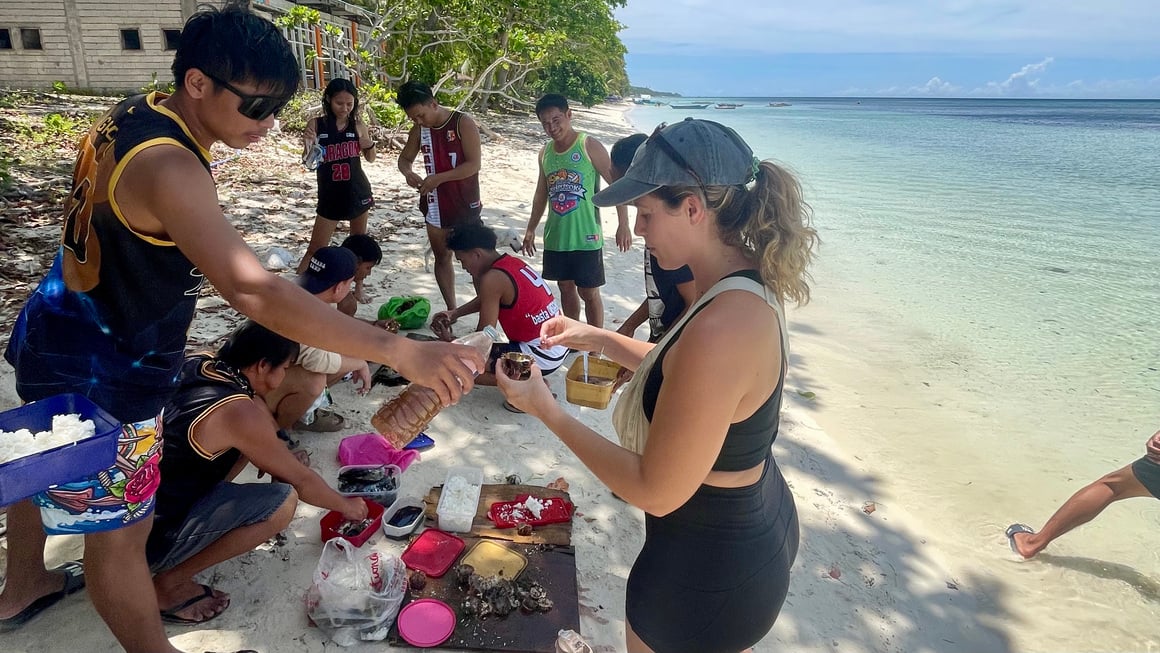
Photo: @danielle_wyatt
How Long To Spend in Siquijor?
The island is relatively small, so you could tick off the main attractions within a few days. However, I’m big on “slow travel“, so I spent a month on the island and I was still finding new places to explore just before I left.
Siquijor is my favourite island in the Philippines, as with so many of the travellers I met. The island really does have a special charm and endless places to explore. Sure, you could do 3 days, but if your itinerary can stretch a couple more, I’d recommend it.

A new country, a new contract, a new piece of plastic – booooring. Instead, buy an eSIM!
Jetpac eSIMs work just like an app: you download it, pick your plan, and BOOM! You’re connected the minute you land. It’s that easy.
Read about how e-Sims work or click below to see one of the top eSIM providers on the market and ditch the plastic.
Grab an eSIM!A Sample 3-Day Itinerary for Siquijor
There are so many epic things to do in Siquijor that condensing it down to three days is a challenge, but you know what? You can do it! Three days is enough to see the best of Siquijor… if you plan it right.
Luckily, I’ve put together this iconic 3-Day itinerary for Siquijor to help you make the most of your trip.
Day 1 in Siquijor – San Juan
Ahh, your first day in this Filipino paradise. I’d recommend starting your day with a coconut and a dip at Paliton Beach. This beach is gorgeous but it gets bloody busy! So getting there early is the best way to really get to see this beach in all its shining glory.
Next up, I recommend heading to the Lungason Falls. When you arrive, you’ll be greeted by friendly locals who will take your 20 pesos entry fee. Depending on what time you get there, you can either head straight down and enjoy the first waterfall.
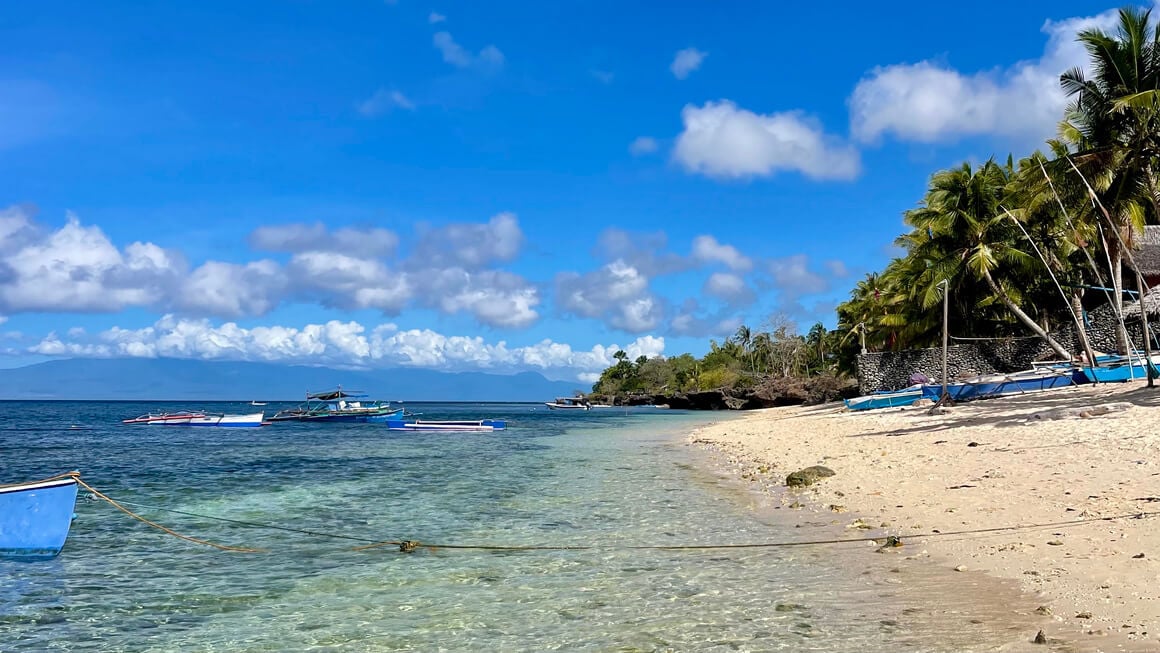
Photo: @danielle_wyatt
Or, if you get there with enough time, I’d recommend asking the kind people at the entrance if you can get a guide to take you on the 12-zodiac waterfall tour. This takes a few hours but is pretty epic! You get to explore the other 11 waterfalls, which you can only do with a guide. The guides are super nice (ours was called Richard) and they take a donation at the end of the tour.
Before you finish the day, don’t miss out on Tubod Marine Sanctuary for some of the best snorkelling in the Philippines. Straight off the beach, you get to explore so much life under the sea! You can rent snorkels here too. If you finish up around sunset, it’s also a cool place to enjoy a beer and the sunset too.
Day 2 in Siquijor – Lazi
Day two is centred around activities near Lazi. I’d recommend heading to Cambugahay Falls as early as you can. We arrived just before 8 am (the time it opens) and there were already other tourists waiting to go in.
This place gets PACKED by midday, especially at the weekends, and almost becomes unenjoyable. So I’d recommend arriving before the masses to experience the real beauty of the falls. You could definitely spend a couple of hours here, soaking in the water and enjoying the EPIC rope swing.

Photo: @danielle_wyatt
Once you’ve enjoyed the falls, you can make a pit stop on your way back into town at Lazi Church and Convent. It won’t take too much time to see these two places, but they will show you a little insight into the religion, culture and history of the island.
I’d finish the day at Salagdoong Beach and enjoy a dose of cliff jumping. Even if you’re not up for the cliff jumping, it’s an ideal spot to finish the day. You can swim, kayak or enjoy a nice meal by the sea. Don’t forget to check the tides for that day, as you won’t be able to jump when the tide is low.
If you have time during day 2, the Enchanted Balete Tree is worth a stop if you’re passing by. This is an attraction for those of you interested in the magic of the island. The base of the tree is home to a spring whose origin is unknown according to locals. You can even buy yourself a mild love potion here!
Day 3 in Siquijor – Apo Island
By day 3, you would’ve managed to have ticked off most of the iconic activities on Siquijor. However, if you have the time and the funds, I’d recommend joining a diving or snorkelling trip to Apo Island. The island is home to some pretty insane marine life and it is a pretty incredible model for sustainable marine conversation.

Photo: @maxpankow
There are companies all over the island that can organise this for you. Coco Grove Beach Resort can organise snorkelling day trips for approx 2800 pesos ($50 USD) including transport, lunch and snorkelling gear.
9 Top Things to Do in Siquijor
From cliff jumping and waterfall chasing to lounging on the beach and discovering historic churches – whatever you’re into, there will be something for you on this mystical island.
You’ll want to note down the activities that most interest you and then figure out where you want to base yourself for minimal transport time. Although, I did love the motorbike rides around the island… it is always easiest to base yourself close to your favourite activities.
These were some of my favourite things to do in Siquijor:
1. Snorkel at Tubod Marine Sanctuary
Hidden just behind Coco Grove Resort in San Juan, you’ll find the BEST snorkelling on the island. It’s literally the size of five rugby fields packed with incredible marine life. You could spend hours exploring this underwater paradise. I’ve snorkelled all over Southeast Asia, but this one tops the charts for me. Especially, as it’s just off the beach! Whether you’re learning to snorkel or a free-diving pro, this spot is the best.
Think… sea turtles, incredible coral and THOUSANDS of tropical fish. The entrance fee was 100 pesos ($1.80 USD), and they also hire snorkels and fins for an additional cost.
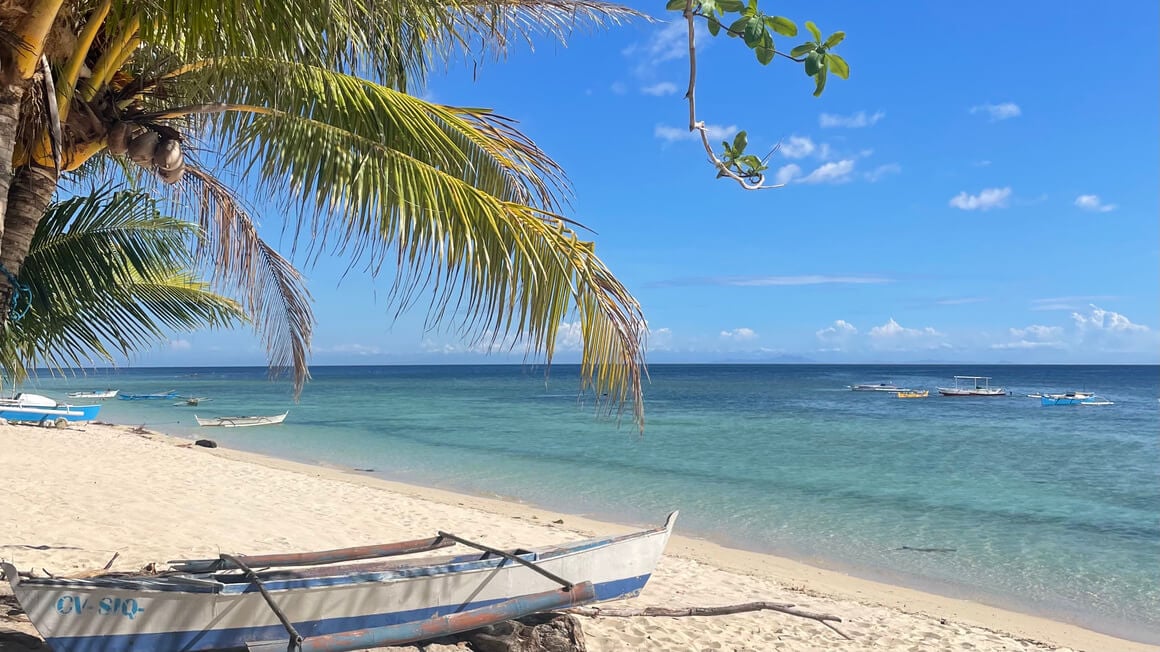
Photo: @danielle_wyatt
If you don’t drive around the island, this tour will take you to whatever stops you like on your own customised itinerary. Stop at Tubod Marine Sanctuary and snorkel till your hearts content. Once you’ve explored under the sea, grab a San Miguel beer (the light one was my favourite) and relax on this beautiful white sand beach.
2. San Isidro Labrador Church and Convent
More commonly referred to as Lazi Church, the San Isidro Labrador Church is the oldest on Siquijor Island. It has a neoclassical style and is made of sea stones and wood, with its floors still in their original form.
It was declared a National Historic Landmark by the National Historical Commission of the Philippines in 1984 and was recently named a National Cultural Treasure by the National Museum of the Philippines in 2012. Right across from the church is the convent, which now functions as the Siquijor Heritage Museum.
The ground floor has been converted into classrooms, and during our visit, we saw some kids practising for a school presentation. The convent was once the largest in Asia.

Photo: @danielle_wyatt
There is no entrance fee to visit the church but you’ll be charged an entrance fee of 20 pesos ($0.35 USD) per person for the convent.
It’s a bit of a random stop off, so if you’d like a little more context you can always join an organised tour that combines this and the other main points of interest on the island. Having a local guide show you around always makes these experiences that bit more special. It’s one thing to admire the architecture, but hearing the stories, the legends, and the everyday life behind it all gives the whole experience a bit more depth.
3. Cambugahay Falls
From the highway, a 10-minute walk along concrete steps will lead you to Cambugahay Falls, the three-tiered waterfall. You can already see the lowest tier halfway through your descent, and you will be mesmerized by its clear blue waters.
The water level in this area is not deep which is why most visitors enjoy here. There is also a rope tied to a tree for those who want to swing and jump into the water! It’s 50 pesos ($0.90 USD) for unlimited rope swings and is pretty epic to be fair. The entrance fee for Cambugahay Falls is 50 pesos per person.
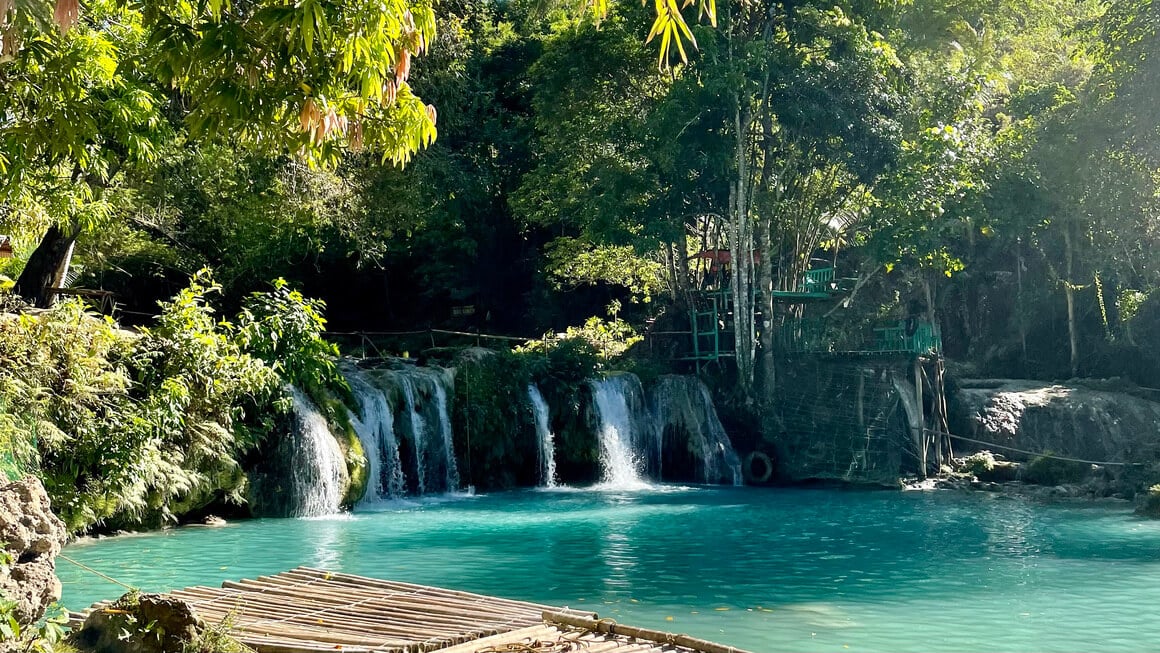
Photo: @danielle_wyatt
If you want to know all of the secret spots and some fire pics, definitely go with a local on a tour. It’s also a great way to explore if you don’t drive a scooter and want a more unique experiencing than just hiring a tuktuk driver for the day.
4. Visit Salagdoong Beach
Salagdoong Beach may have simple facilities, but whatever it lacks in infrastructure, it makes up for its natural beauty. Anyone who has been here would agree that its water – layers of deep greens and light blues – is the main attraction.
Add to that the cliff jumping area with platforms for 5m and 10m jumps, and you have the best activity for the adrenaline junkies. Salagdoong Beach also has a restaurant, and this is where we had lunch before swimming and admiring the view.
5. Take a Guided Tour of the 12 Zodiac Waterfalls at Lungason Falls
Home to the highest rope swing on the island, test your thrill level and see if you’re up for the 9m swing! The local kids can do some pretty cool tricks on it. However, make sure you check that it’s deep enough in the pool first – the first time we were able to do it but the second day we arrived there was a lot less water in the falls, so no swinging that day.

Photo: @danielle_wyatt
You can also choose to jump off the rocks, these are still pretty high but way more doable! When we arrived, we asked for a guide to take us to the Zodiac Falls. Behind the first one (which is the busy one), there are 11 more stunning waterfalls to climb and explore. Note: you have to have a guide to go beyond the first one.
The guides are super kind and do it on a donation basis – we tipped 500 pesos ($9 USD) for two. Our guide was called Richard and he was awesome.
6. Visit Paliton Beach
Paliton Beach is a very beautiful beach in San Juan town and mate, it pops off at sunset. It’s one of the most popular beaches on the island. During my time on Siquijor, I went to so many beaches where you’d hardly see anyone else around… I think it’s because they are all at Paliton Beach.
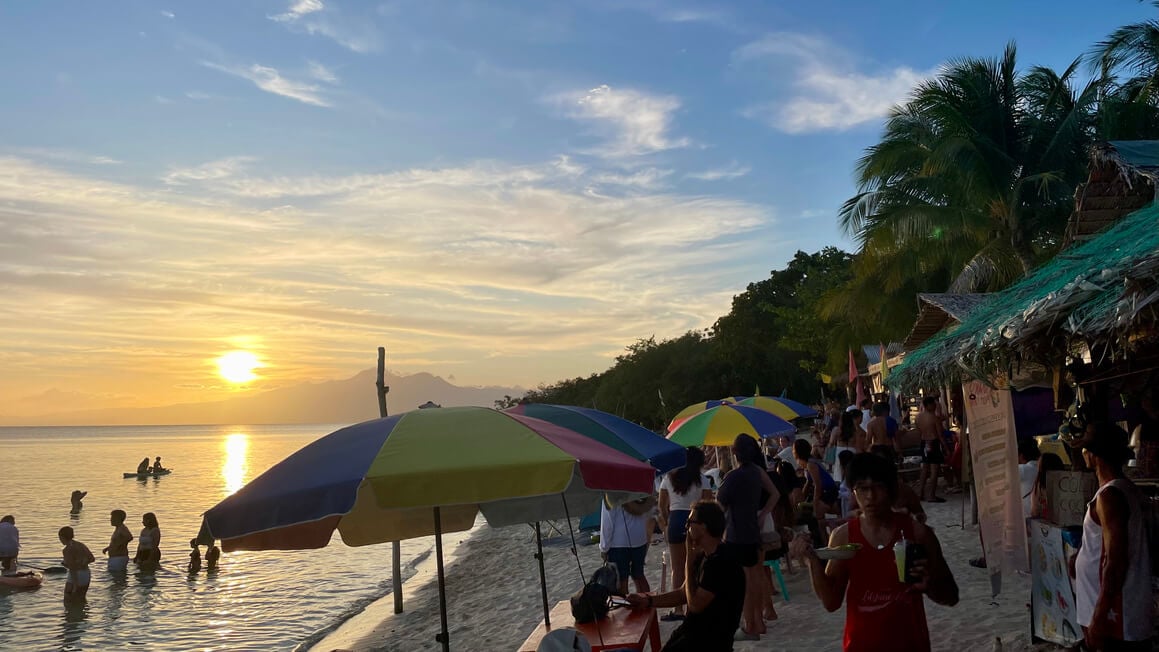
Photo: @danielle_wyatt
Although Paliton Beach is beautiful, it was a bit too busy for my liking at this time of day. I’d recommend trying it a bit earlier and catching the sunset at another epic spot on the island.
However, it did have a buzz about it. Everyone enjoying the sunset, beer in hand – that’s always a vibe.
7. Enchanted Balete Tree
For those who want to have a taste of Siquijor’s mysterious side, drop by the centuries-old balete tree along the highway of Lazi. What makes this unique from all the other balete trees in the country is the cold spring found at its base, the source of which is unknown according to locals.
Small fishes have made this spring their home, and you can dip your feet into the water for a fish spa. There are also some stalls that sell snacks and souvenirs, including ‘mild’ love potions. The stronger ones, according to a vendor I asked, are only available upon request from faith healers.
8. Head for Dinner at Roch Cuisine
We loved this dinner spot and ate here so many times! The restaurant is set up every evening just next to the bridge in San Juan town. The ladies that run the restaurant cook up a storm earlier in the day – you can then select which delicacies you want to try from their silver dishes laid out on a table.
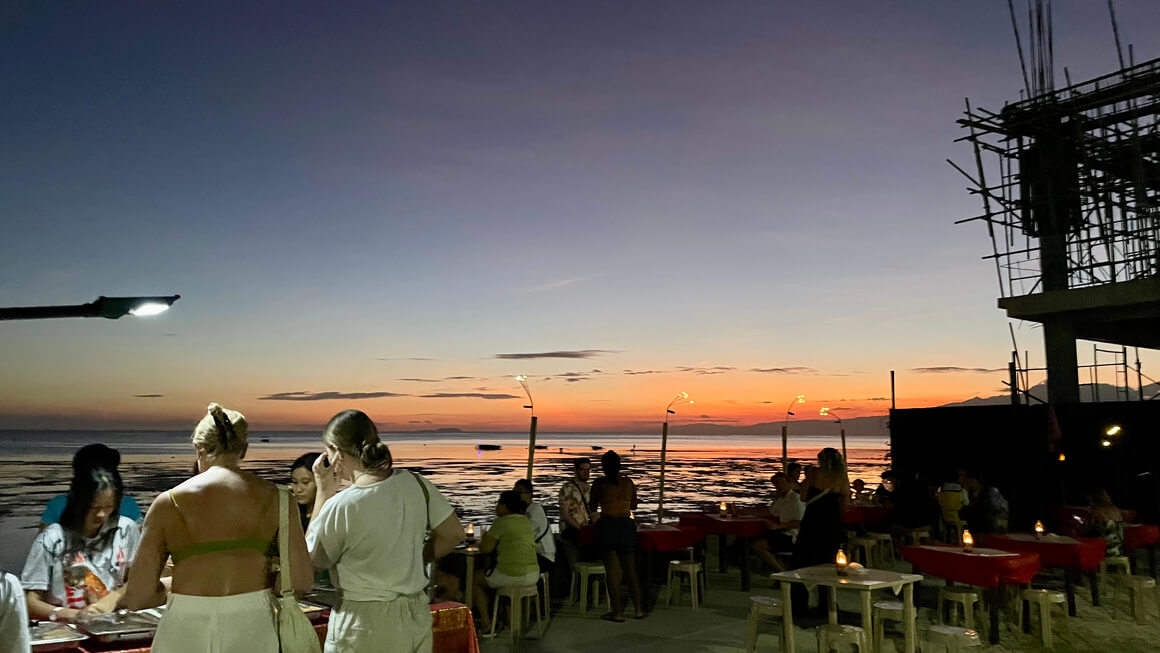
Photo: @danielle_wyatt
Be sure to get there early(ish) as they stop serving when the food has run out and you don’t want to miss the best part, the sunset view!
Top tip: leave room for dessert, the mango cake is sooo good.
9. Go Diving or Snorkelling at Apo Island
Apo Island is one of the best ecotourism destinations in the Philippines! Once threatened by irresponsible fishing practices, which have since ceased, Apo is now a marine success story. The diving here is spectacular and it makes ya feel pretty good knowing that this was all saved because people cared <3
If you want to make life easy for you, then join a tour to see this special island! You get a guide, lunch and pick up so everything is sorted for you. All you gotta do is dive in and start cosplaying mermaids. You even get time to explore the island and if you’re not living your best beach bum life, I definitely recommend the 30-minute trek to the Habagat Trail where you’ll be rewarded with a panoramic view of the coastline and marine sanctuary.
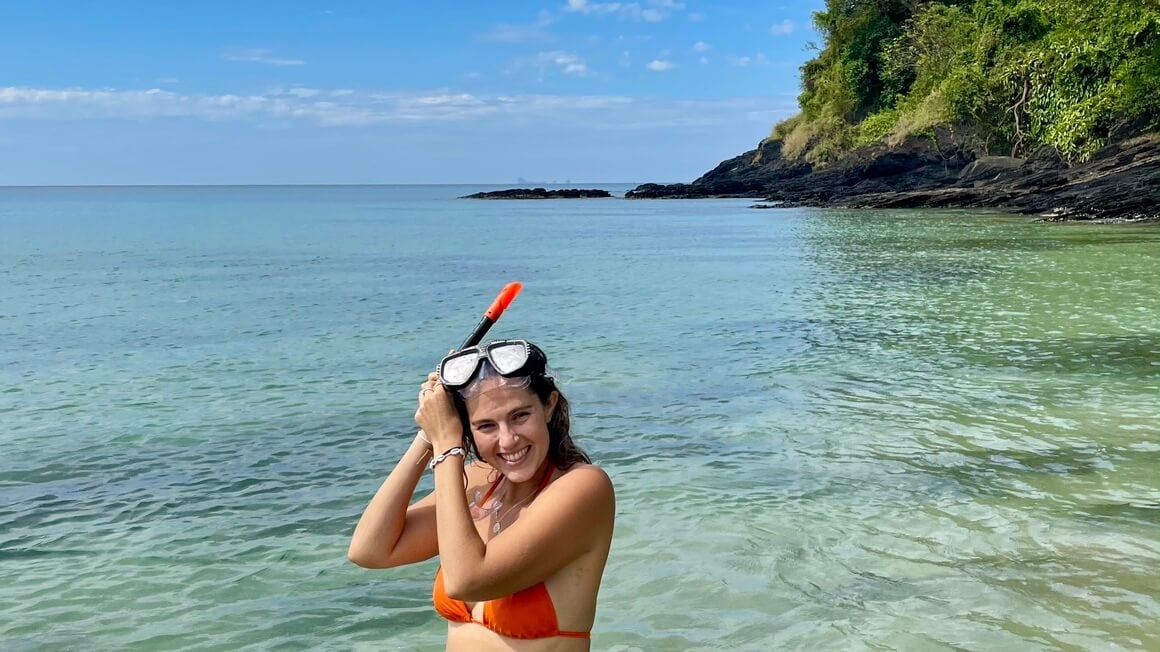
Photo: @danielle_wyatt
Note that you will need to travel back to Dumaguete port and then arrange a water transfer to get to Apo Island if you plan to stay overnight. If you don’t want to deal with transferring, then talk to a local resort on Siquijor about day trips.
Top tip: Another banger of a place to dive is neighbouring Panglao Island. If you wanna pop over and go diving in Panglao, be sure to hit up Alex — he’s a LEGEND and really knows his stuff… both under AND above water. Just reach out via WhatsApp and let him know I sent you: +44 7812 648968.
Where to Stay in Siquijor
There’s good news for backpackers and budget travellers: Siquijor just might be the perfect destination to stay in the Philippines. Budget accommodation is abundant on the island, to the point that most of them are right next to each other. Some are even located along the beach, offering breathtaking views of the sea.
There are so many amazing hotels and hostels in Siquijor. The average price of a hostel stay is between $10-35 USD. But they came stacked with all the amenities you could need and social vibes to meet other travellers. You pay for friends and shared spaces at a hostel, not just the bed!
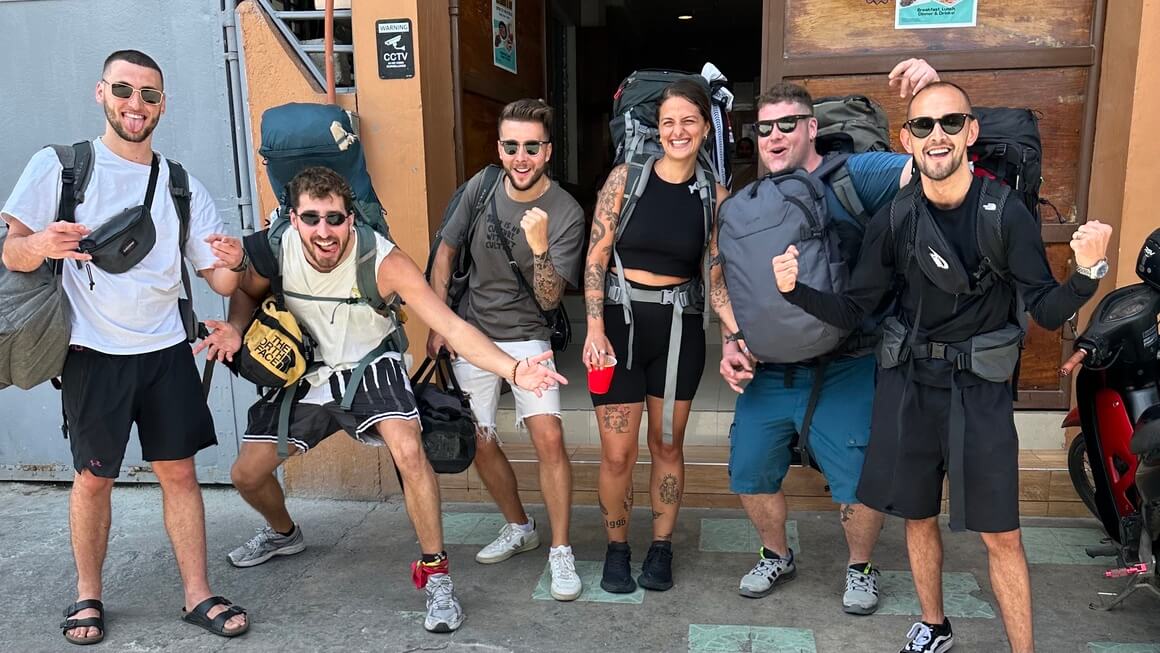
Photo: @joemiddlehurst
If you’ve been solo travelling in the Philippines and you’re a bit over the hostel scene – you can find yourself something a bit more private. There are loads of options across both booking.com and Airbnb.
If you want a minimalistic, budget stay you’ll be looking at approx $6-20 USD per night or a mid-range would be more like $20-35 USD per night. Many have air conditioning and even swimming pools!
My top choices of where to stay in Siquijor that are worth checking out are:
- Best Hotel in Siquijor – Nakabalo Guesthouse & Restaurant
- Best Hostel in Siquijor – Fable Hostel
- Best Airbnb in Siquijor – Riverside Cabin near Cambugahay Falls
- Best Resort in Siquijor – Coco Grove Beach Resort

Photo: @danielle_wyatt
If you are willing to splurge on your accommodation, Coco Grove Resort in San Juan town is a popular choice among tourists. It has a private beachfront location (in front of the BEST snorkelling beach on the island – Tubod Marine Sanctuary), three fully-equipped restaurants, and cultural events and activities exclusive to in-house guests only.
The Best Places to Stay in Siquijor
Are you wondering which is the best part of Siquijor to stay in? Well, let me give you a few suggestions.

Maria Town
Not only is Maria Town one of the best places to stay in Siquijor for first-time visitors, but it’s also the ideal destination for travelers who’d like to experience authentic, Filipino-style living!

Larena Town
Traveling on a budget? Then the best area to stay in Siquijor is no doubt Larena Town, a thriving seaport and commercial center.
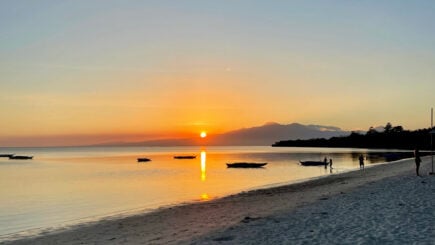
San Juan
Siquijor is a pretty small island, so it doesn’t have a super vibrant night scene like you see in hostels in Cebu or Manila, but San Juan town does have a few bars and nightclubs. I would advise you to visit San Juan during the weekend for a lively ambiance.
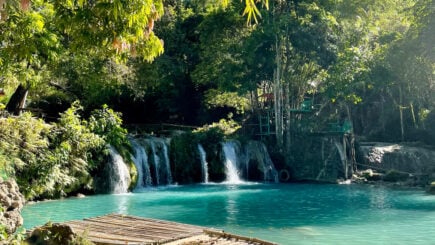
Lazi
Let’s end our list of best areas to stay in Siquijor with another one of my favorites! Lazi Town is easily among the coolest neighborhoods on the island, mainly because of its unvarnished beauty.
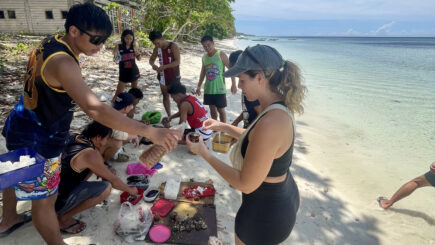
Siquijor Town
Surrounded by some of the most beautiful beaches in Siquijor, Siquijor Town is an absolute gem of a place that lends itself super well to families!
Backpacking Siquijor Costs
Siquijor was a little more expensive than I expected. After spending six months across Thailand and Indonesia beforehand, the prices were the highest I’d seen for a while. However, they were still pretty damn affordable compared to my expensive ol’ home in New Zealand…
You know what was super cheap? Beer! The most popular beer on the island was San Miguel which was delicious. If you feel brave enough, you can try your hand at Red Horse… it’s potent. A beer will set you back around 50 pesos a bottle ($0.90 USD).
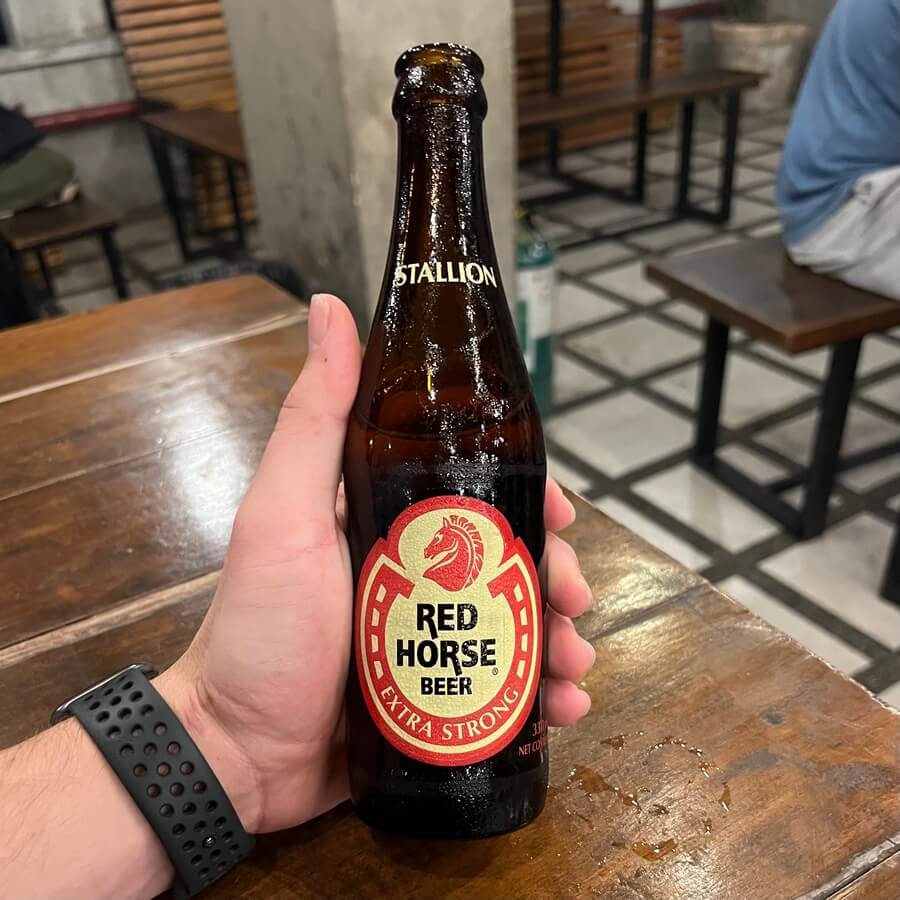
Photo: @joemiddlehurst
A Daily Budget in Siquijor
Here is a breakdown of what you’ll likely spend (in USD) as a traveller in Siquijor:
| Expense | Broke Backpacker | Frugal Traveller | Creature of Comfort |
|---|---|---|---|
| Accommodation | $4-$7 | $8-$15 | $25+ |
| Food | $3-$8 | $9-$16 | $20+ |
| Transport | $2-$8 | $9-$15 | $20+ |
| Nightlife Delights | $1-$5 | $6-$11 | $15+ |
| Activities | $0-$10 | $11-$20 | $30+ |
| Total per day: | $10-$38 | $43-$77 | $110+ |
A Few Free Things to Do in Siquijor
Siquijor isn’t the most expensive place to travel however, we Broke Backpackers would do anything to save a few bucks, right? So, in the spirit of sticking to the budget, here are a few free things to do in Siquijor.
Most of Siquijors popular tourist spots still often charge, even as small as 20 pesos ($0.35 USD). But don’t worry, in true backpacker style, I scoped out the best free things to do during my stay.
- Capilay Spring Water Park – this FREE swimming pool is right in the centre of San Juan and is the ideal spot to cool off in freshwater. The pool is surrounded by shade and there are plenty of benches to chill out and relax on.
- San Juan Beach at Sunset – San Juan Beach is so underrated in my opinion. Unless it’s high tide, the beach is not really swimmable. However, it’s the perfect sunset spot if you’re after some peace and quiet. And the best part? It’s absolutely FREE!
- Lazi Church – With no entrance fees, Lazi Church is a great free attraction to visit.
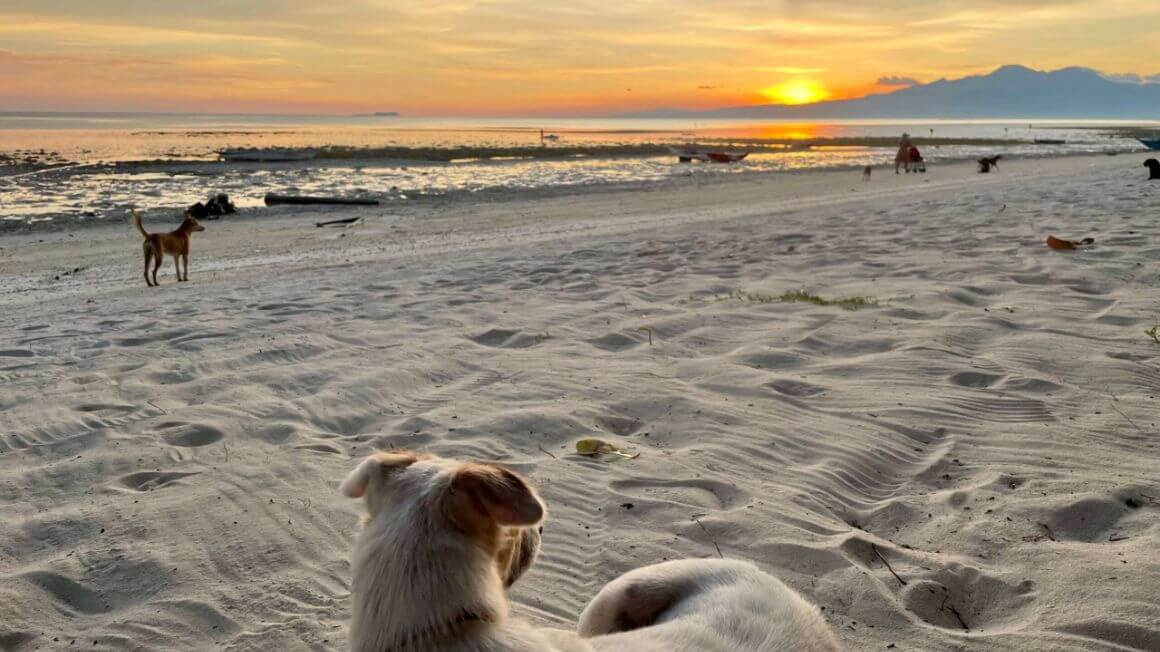
Photo: @danielle_wyatt
Top Tips – Travelling Siquijor on a Budget
- Eat the Street Delicacies: The weird and wonderful Filipino food that is sold on the street is often delicious and CHEAP. Avoid the overpriced tourist restaurants and go where the locals go.
- Sleep on the Couch: Yep, you can couch surf in Siquijor. Get cosy with the friendly locals and crash on their couch. It might be helpful to pack a good travel tent to pitch up instead (it’s always nice to have a little privacy, right?)
- Haggle: Get your haggle game on or you’ll often be ripped off. Haggling is fun and totally normal in the Philippines, so give it a go!
- Camp: Give camping a go, – hang your backpacking hammock for the night. It’s cost-free, baby!
- Cook for yourself: Book a place with a kitchen and save money on going out. Head to the local fruit and veg shop and whip yourself up a meal. You could even pack a good-quality backpacking stove if you can’t find a place with a decent kitchen.
- Pack a travel water bottle: Save money – and the planet – every day <3
Why You Should Travel to Siquijor with a Water Bottle?
When you travel to some of the world’s most remote places, you come to see the full extent of the plastic problem and it’s honestly, really f*cking shocking. It makes you realise the importance of what it means to be a responsible traveller.
The locals on Siquijor really give a shit about the planet. No plastic bags, the beaches were clean and they even closed the beach for any activities for three days a month to let the sea life thrive. It was so refreshing to see! They also have water refill machines at most of the small shops along the roads and only charge a few pesos – use em!
Plus, now you won’t be buying overpriced bottles of water from the supermarkets either – so I guess this is also a budget travel hack! Travel with a filtered water bottle instead and do your bit.

Drink water from ANYWHERE. The Grayl Geopress is the worlds leading filtered water bottle protecting you from all manner of waterborne nasties.
Single-use plastic bottles are a MASSIVE threat to marine life. Be a part of the solution and travel with a filter water bottle. Save money and the environment!
We’ve tested the Geopress rigorously from the icy heights of Pakistan to the tropical jungles of Bali, and can confirm: it’s the best water bottle you’ll ever buy!
View on REI Read the ReviewBest Time to Visit Siquijor
If you want to experience the true magic of Siquijor, you can either join the “crowds” in the dry season – particularly January and February. Or, you can hold off for the wet season… whaaaat? Yep, that’s right the magic of Siquijor is still pretty incredible even in the rainy season.
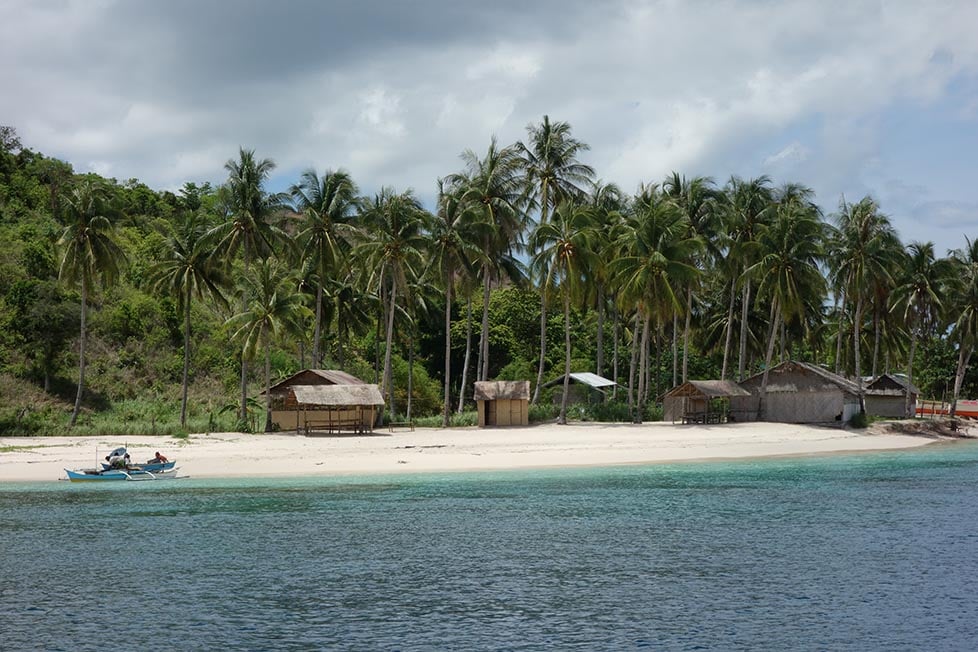
Photo: Nic Hilditch-Short
Let’s break this down by seasons…
- Dry Season (November – April): This is when the weather is warm and the downpours are scarce. Expect temperatures of around 30 degrees reaching the mid-thirties on the islands. The hottest months and most humid are March to May when temperatures will reach up to 36 degrees. This is when I visited, and I can confirm it was fuuuuuuuuckin hot – tick that air conditioning filter when looking for Airbnbs… you’re gonna need it.
- Wet Season (May – October): ‘Wet Season’ normally puts people off; however, this is a great time to travel to Siquijor. The rains only last around an hour or so before the sun comes back out again. Expect temperatures of around 25 degrees – which is actually a pretty ideal heat for functioning in. Plus, things get cheaper around this time – music to my budget backpacker ears.
- Typhoon Season (June – August): I would recommend avoiding this time. The rain becomes much heavier and typhoons are common. Many flights and ferries will be cancelled or face delays which is never ideal.
What to Pack for Siquijor
It’s more than likely that Siquijor is going to present you with a shit load of sunshine and some hot ass days. In these situations, it’s great to have swimmers and breathable clothing with you. The island is not as conservative as some of its other neighbours in Southeast Asia, so you can flaunt a liiiittle more skin.
However, take light cover-up layers. A sarong/ pashmina is perfect for keeping your precious skin from being a bright shade of red. It’s also handy to have if you plan to visit temples or sacred places that often ask you to cover up.
If you’re heading out in the rainy season, it’s always a good idea to pack a good rain jacket. My favourite is the Patagonia Torrentshell jacket. It saved my ass from getting saturated so many times.
If you have your own snorkel, throw it in as it’ll save you money on renting them and it’s just always nice to use your own, right?
Ear Plugs
Snoring dorm-mates can ruin your nights rest and seriously damage the hostel experience. This is why I always travel with a pack of decent ear plugs.
Hanging Laundry Bag
Trust us, this is an absolute game changer. Super compact, a hanging mesh laundry bag stops your dirty clothes from stinking, you don’t know how much you need one of these… so just get it, thank us later.
Sea To Summit Micro Towel
Hostel towels are scummy and take forever to dry. Microfibre towels dry quickly, are compact, lightweight, and can be used as a blanket or yoga mat if need be.
Monopoly Deal
Forget about Poker! Monopoly Deal is the single best travel card game that we have ever played. Works with 2-5 players and guarantees happy days.
Grayl Geopress Water Bottle
Always travel with a water bottle! They save you money and reduce your plastic footprint on our planet. The Grayl Geopress acts as a purifier AND temperature regulator. Boom!
Siquijor Travel Guide to Getting There and Around the Island
If you are BALLIN’ out, you can fly to Siquijor on a chartered flight from Cebu Airport. However, for us mere mortals, this is not likely going to be our chosen mode of transport to get to Siquijor.
The main gateway is Dumaguete area, the capital city of nearby Negros Oriental. Siquijor used to be part of this province before it was granted independence on September 17, 1971 – Whoop, go Siquijor!
If coming from the country’s capital Manila, your best choice would be to fly to Dumaguete City. From Dumaguete-Sibulan Airport, hail a tricycle (a ride quite similar to Thailand’s infamous ‘tuk-tuks’) and tell the driver to bring you to the Dumaguete Port or Pier, which is around 15 minutes away. The fare is at least 150 PHP ($2.90 US).
You will be dropped off just outside the port compound’s gate as vehicles aren’t allowed inside. Once inside, proceed to the counters selling ferry tickets.
If you fancy taking your time and staying overnight I can’t recommend one of the many amazing Airbnb’s in Dumaguete enough.
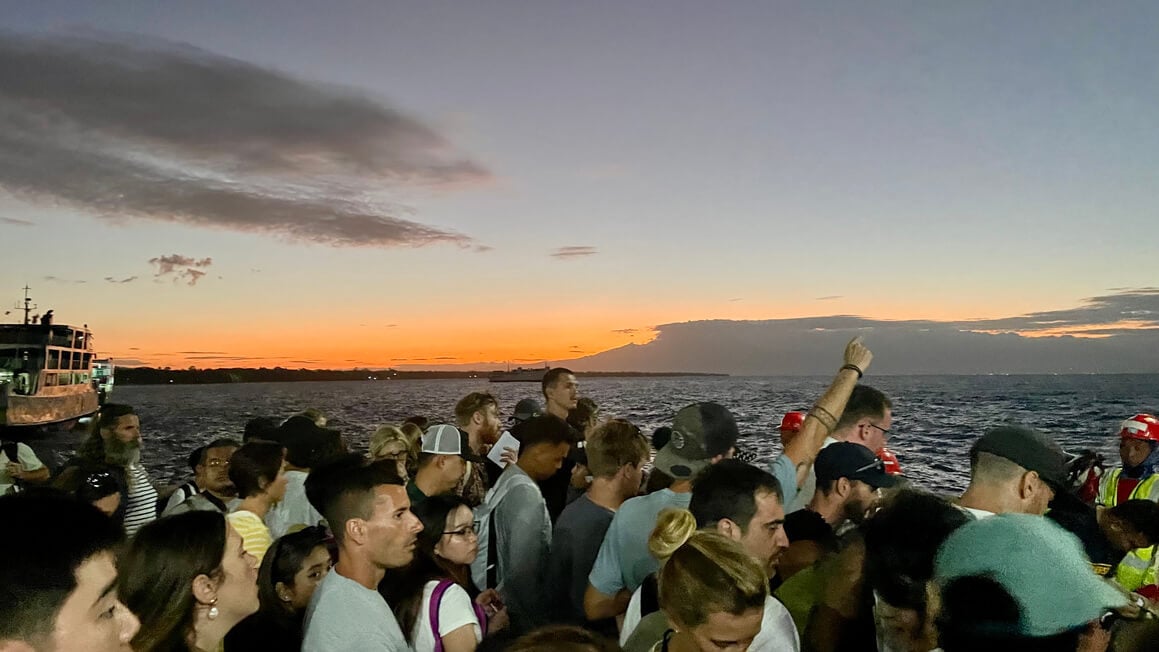
Photo: @danielle_wyatt
Numerous shipping lines have trips all throughout the day, so buy the ticket for your preferred time. Depending on the type of ferry you will ride, travel time to Siquijor can be as short as 45 minutes or as long as two hours.
Siquijor can also be reached from different points in the Visayas and Mindanao regions. Cebu, Bohol, Dapitan City, and Iligan City are some of the places that provide access to the island.
I departed from Cebu City. I booked my tickets through Oceanjet and headed to Pier One and the process was pretty simple. I would definitely recommend booking tickets online – the ticket counters outside were BUSY. It took around 5 hours to get to Siquijor with one stop in Bohol.
Also, take note that there are two Siquijor ports on the island, Siquijor Town, and Larena. These are two different municipalities, so it’s important to know where your ferry will dock and if it’s close to where you’re planning to stay in Siquijor. You can jump in a tricycle when you arrive – just be sure to haggle for a good price.
Travelling around Siquijor
Tricycle is Siquijor’s main mode of transportation. As the country’s third-smallest province measuring only 327 square kilometres, the entire island can be toured in a day, usually by chartered tricycles. For tours around Siquijor’s tourist spots, you may charter a tricycle for at least 1,000 PHP ($21 US).
Based on my experience, all of the tricycle drivers in Siquijor offer tours as this seems to be a huge source of their income. Chances are, your tricycle driver from Siquijor port to the hotel will also offer you his services. And probably a motorbike rental too! The locals are savvy business people, I tell ya.
However, during our time on the island, we rented a motorbike to explore the island ourselves. This was about 250 pesos per day ($4.5 USD) and was a great option! There are some bigger rides on the island. For example, getting from San Juan to Salagdoong Beach can take 45 minutes. There and back, in the heat, can be a big day. So, you may want to use a motorbike for the shorter distances and tricycles for the longer – whatever makes you tick!
Public jeepneys are also over the main highway, but these often only depart when they are full. So, you can be waiting a while before you go anywhere! If you are in a hurry and wouldn’t mind spending a bit more on transportation, then the tricycle is the better option. However, it’s a pretty neat experience.

Photo: @willhatton__
Staying Safe in Siquijor
Despite its reputation for black magic and other spooky things, crime is not a big problem in Siquijor. The island is a pretty safe place to travel. Although, as with anywhere you go, it’s important to keep your wits about ya and travel safely.
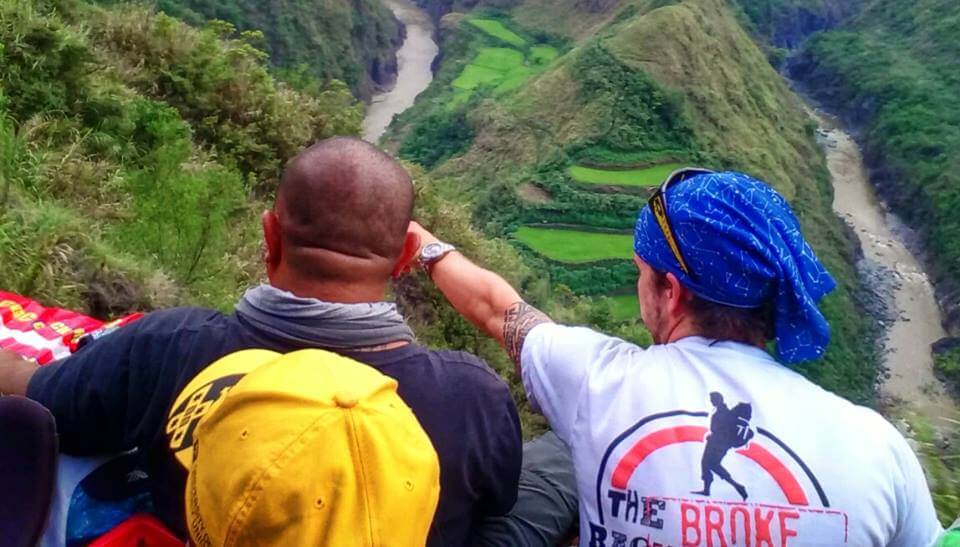
Photo: @willhatton___
Don’t drink and drive, ALWAYS wear a helmet, pack a first aid kit and maybe even pick yourself up a backpacker security belt to keep your cash safe. There are loads of steps that you can take to prevent shit from going wrong.
Getting Insured BEFORE Visiting Siquijor
And as many preventative actions we take, shit can still happen. Don’t be silly, get yourself some good travel insurance before you head on your adventure.
ALWAYS sort out your backpacker insurance before your trip. There’s plenty to choose from in that department, but a good place to start is Safety Wing.
They offer month-to-month payments, no lock-in contracts, and require absolutely no itineraries: that’s the exact kind of insurance long-term travellers and digital nomads need.
SafetyWing is cheap, easy, and admin-free: just sign up lickety-split so you can get back to it!
Click the button below to learn more about SafetyWing’s setup or read our insider review for the full tasty scoop.
Working and Volunteering in Siquijor
In general, Siquijor isn’t typically a place that ex-pats head to looking for work. That said, I met a TON of Westerners who had retired on the island and a few digital nomads too! The cost of living in the Philippines is pretty low which makes the tropical lifestyle here even more appealing.

A new country, a new contract, a new piece of plastic – booooring. Instead, buy an eSIM!
Jetpac eSIMs work just like an app: you download it, pick your plan, and BOOM! You’re connected the minute you land. It’s that easy.
Read about how e-Sims work or click below to see one of the top eSIM providers on the market and ditch the plastic.
Grab an eSIM!The Digital Nomad Scene in Siquijor
To work in the Philippines a work visa is required which must be obtained by an employing company. Despite being popular with digital nomads, there is no digital nomad visa available and most simply enter on long-stay tourist visas.
However, I’m not going to beat around the bush here, the wifi is pretty shocking and the daily power cuts are far from ideal. However, if you can manage a bit of an electricity issue, working remotely from Siquijor can be an absolute dream.
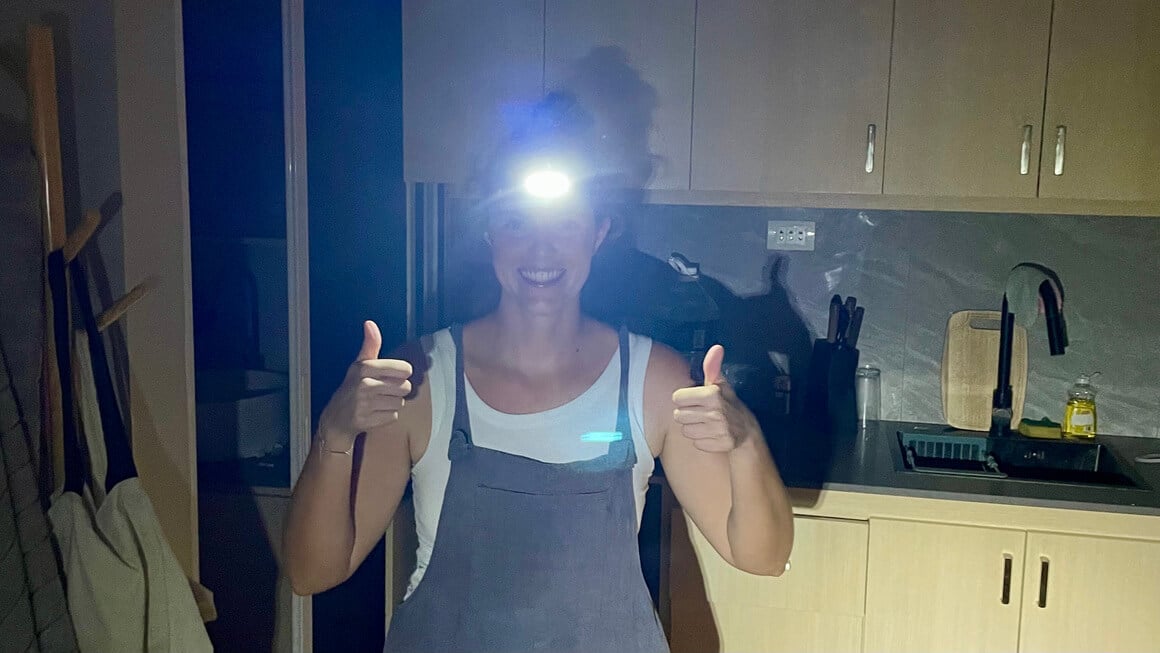
Photo: @danielle_wyatt
Side note: I’d highly recommend investing in a good head torch to see yourself through the dark times (literally). My go-to is the PETZL ACTIK CORE Headlamp.
Volunteer in the Siquijor
Volunteering overseas is an incredible way to immerse yourself in the local culture and sprinkle a bit of good in the world while you do it. Not to mention the free accommodation and other perks that often come along with it…
There’s a wide variety of volunteer projects in the Philippines ranging from teaching English to animal care to agriculture to pretty much anything!
Teaching and cultural exchanges are almost always available to volunteer in to aid community development. Other opportunities include assisting with eco-projects on farms and helping out in hospitality.

Photo: @willhatton___
There is no special visa to volunteer in the Philippines as long as it’s for less than 90 days, but you’ll have to apply for the appropriate permit to stay long-term.
Worldpackers is our go-to, they connect travellers with host projects. Check out the Worldpackers site and see if they have any opportunities that tickle your fancy in Siquijor before signing up.

Worldpackers: connecting travellers with meaningful travel experiences.
FAQs About Backpacking Siquijor
Before you come to Siquijor, you’re likely to have a few burning questions. Luckily, I’ve got answers!
Final Advice Before Visiting Siquijor
There are so many beautiful places and islands to visit in the Philippines but let’s not kid ourselves: finding your own island paradise away from the tourists isn’t as easy as it used to be…
Times change, faith healers disappear to village outskirts, and beach resorts take their place. If you want to truly find the magic that remains, you gotta go looking. Enter Siquijor… my favourite island in the Philippines.
A place of dreams, Siquijor will forever hold a special little place in my heart. From discovering incredible underwater worlds and cliff jumping to waterfall sharing and learning more about the mystical healers – this island is packed with epic shit to do.
I hope you found this Siquijor travel guide useful, it was so much fun reminiscing on my time on the island <3 But it’s over and out from me (she says as she opens SkyScanner…. how much are flights to Siquijor…..).
But seriously, have the BEST time exploring this island. Find yourself a healer, buy a strong love potion, and then smuggle it back home to woo your ideal spouse. Now that’s a journey! Adios, Amigo
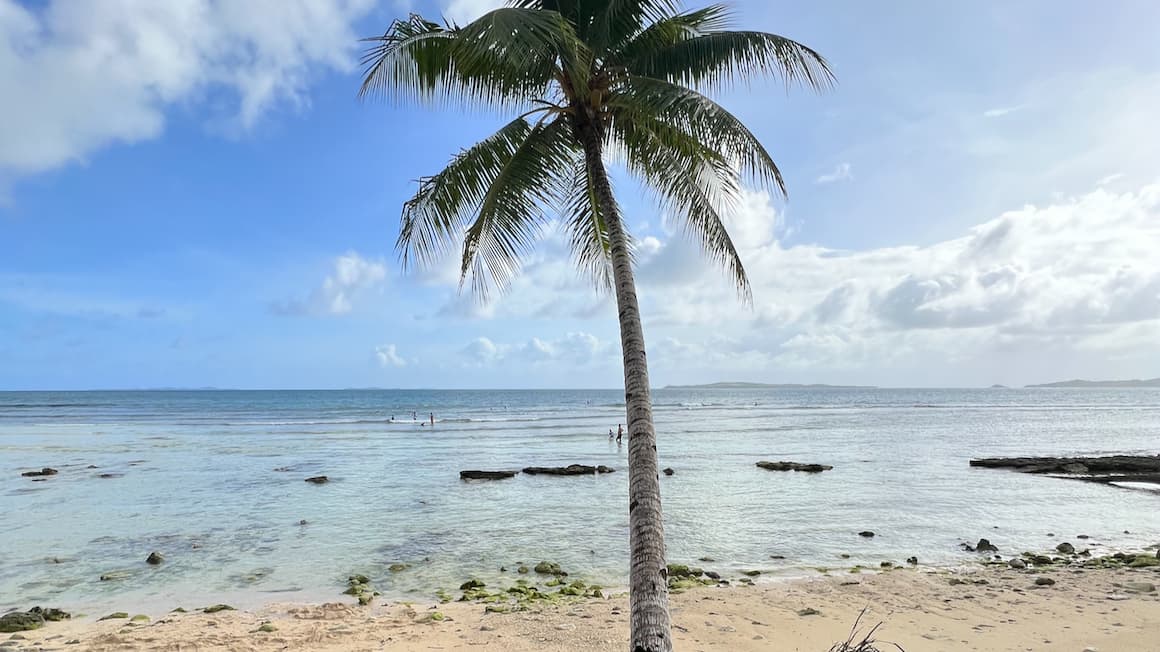
Photo: @amandaadraper
Buy Us a Coffee!
A couple of you lovely readers suggested we set up a tip jar for direct support as an alternative to booking through our links, since we’ve decided to keep the site ad-free. So here it is!
You can now buy The Broke Backpacker a coffee. If you like and use our content to plan your trips, it’s a much appreciated way to show appreciation 🙂















